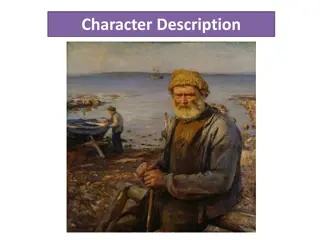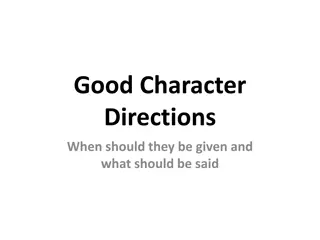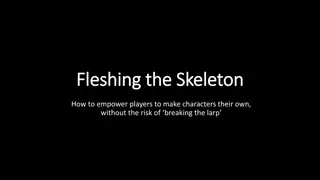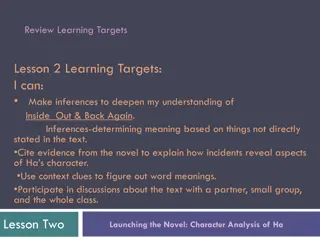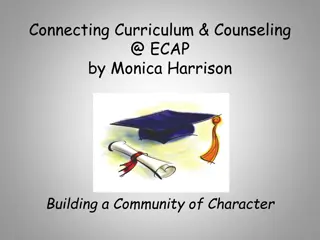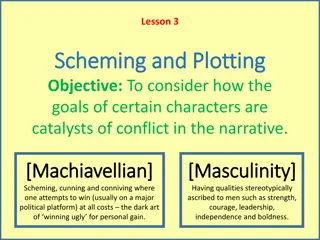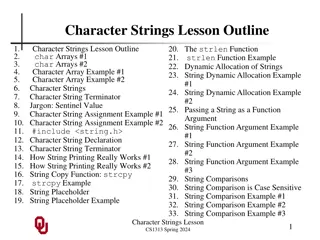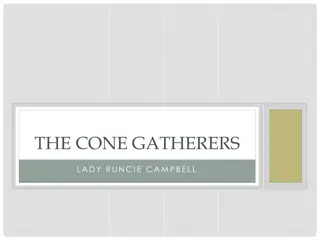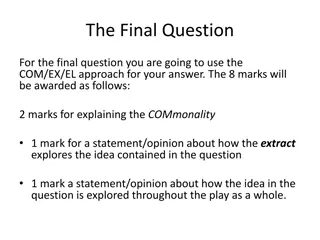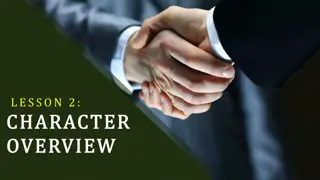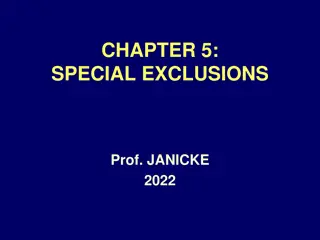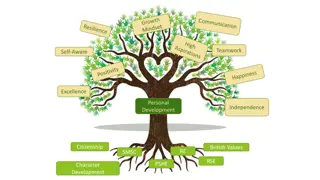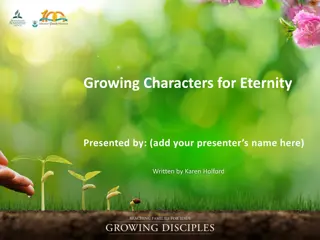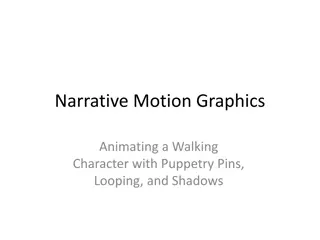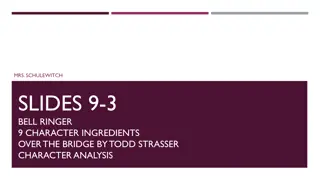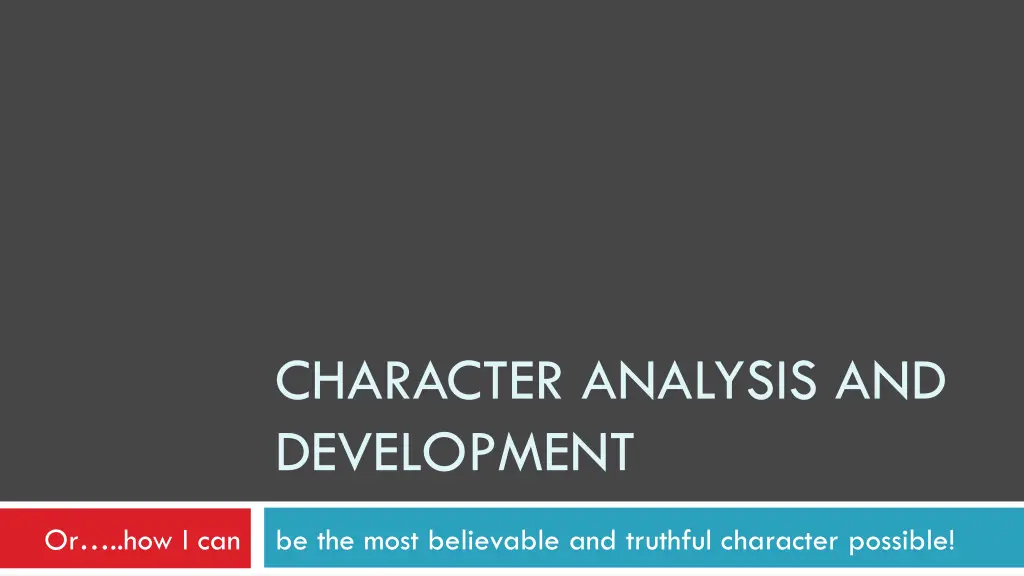
Crafting Believable Characters: Analysis, Development, and Performance Tips
Dive into the world of character development for actors with insights on motivation, conflict, objectives, obstacles, internal traits, external traits, and more. Learn how to create authentic and engaging characters that captivate audiences.
Download Presentation

Please find below an Image/Link to download the presentation.
The content on the website is provided AS IS for your information and personal use only. It may not be sold, licensed, or shared on other websites without obtaining consent from the author. If you encounter any issues during the download, it is possible that the publisher has removed the file from their server.
You are allowed to download the files provided on this website for personal or commercial use, subject to the condition that they are used lawfully. All files are the property of their respective owners.
The content on the website is provided AS IS for your information and personal use only. It may not be sold, licensed, or shared on other websites without obtaining consent from the author.
E N D
Presentation Transcript
CHARACTER ANALYSIS AND DEVELOPMENT Or ..how I can be the most believable and truthful character possible!
The Actor and the Character Every actor s job requires extensive crafting or background information. The more you know about your character, the better your performance! You need to use ARTISTIC SELECTIVITY to decide what is essential to reveal to the audience. Every actor has a DUAL ROLE. You are both the character AND the actor. You have to create the delicate balance of believable characterization.
Motivation/Conflict/Objective/Obstacle Motivation the specific reason for saying or doing something Stakes the higher the STAKES in the play, the greater the character s motivation Objective the goal of the character Obstacle whatever is standing in the way of your objective Conflict the dramatic opposition of the protagonist with: Society His/her peers Himself/herself
Know the character INSIDE and OUT! Does the way the character sits and stands suggest confidence, or timidity? Does the character move with nervousness or strength? What does the character s movement indicate about health/age? Does the character have any habits that provide clues to personality? Does the character speak with any regional dialect/accent? Does the character dress neat or sloppy? Style? External traits characteristics that make up physical appearance, such as posture, gestures, mannerisms, voice, and clothing
Know the character INSIDE and OUT! Is the character intelligent, clever, dull, average? What are the character s morals or beliefs? What is his or her attitude toward other people and life in general? Is the character outgoing or shy? What are his/her likes and dislikes? Internal traits the characteristics that make up personality, such as family circumstances, environment, occupation, level of education, interests, etc.
Different types of PLAYS Realistic play versus Nonrealistic play
Realistic Play Realistic play a play that imitates real life and shows recognizable characters Representational style the style used by actors in a realistic play; they act as though unaware the audience is watching FOURTH WALL: the imaginary wall through which the audience views the play
Nonrealistic play Nonrealistic play the characters and/or situations are exaggerated and depart from real life. Presentational style the actors will directly address the audience, breaking the illusion of the fourth wall NO FOURTH WALL USED IN THIS TYPE OF PLAY! PLANTS AND ANIMALS MIGHT TALK!
Plot Mountain/Plot Structure Exposition the set up of the play. Characters, setting, time. Who, where, what, etc. What happened BEFORE the play began? Conflict The event that sets the action on its course; also known as inciting incident
Plot Mountain continued Rising Action events used to build dramatic tension Climax the turning point of the story. The protagonist usually makes an irrevocable decision Falling Action all of the action that follows the climax Resolution the conclusions, the tying together of loose ends
Important terms to remember: Mood a play s emotional texture. Every aspect of a play contributes to its mood. Subtext information implied but not stated about a character Loving your character LISTEN TO MRS. CAMPBELL EXPLAIN ABOUT THIS!
Loving your character You must LOVE your character. This does not mean you have to LIKE who you play. It means that you cannot JUDGE your character you have to play them to the best of your ability without judging what they do. Examples: abortion, murder
Cue and cue-pickup What should I do with the following line? Bob: I can t go today. Sue: Why not? Bob: Well, my mom said Sue: I don t care about your mom! Cues the last words or action of one actor that immediately precede another actor s lines PICK UP YOUR CUES!


